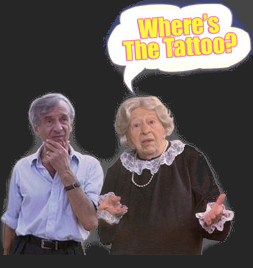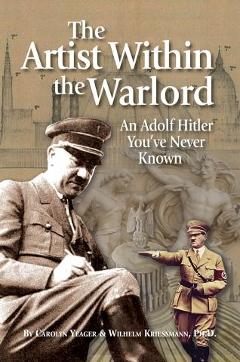Postwar German artist Anselm Kiefer honored by Jews in New York
"I have tried to do something that is really impossible: uniting the Jewish and German spirits."
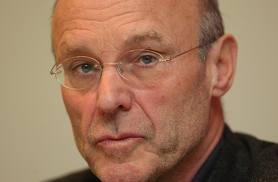
Truer words were never spoken. It is impossible, for sure. Is artist Kiefer aware of what he's saying and means it, or did it just come out that way? On Tuesday, Dec. 13, the following information was posted at Germerica.net.
Previous recipients of the award include Chancellor Angela Merkel (2010) and maestro Kurt Masur (2009). The award pays tribute to persons who have promoted reconciliation between Germans and Jews.
Leo Baeck Institute, which bestows the medal annually, is a New York City-based research library devoted to the study of the history and culture of German-speaking Jewry. It was founded in 1955 and named in honor of Rabbi Leo Baeck.
Kiefer said in his remarks he had received the medal because "I have tried to do something that is really impossible: uniting the Jewish and German spirits."
Germans didn't always like him because he recalled their past, Kiefer said. But those who don't deal with the past, cannot proceed the future, he said.
Art critics describe Kiefer as one of the great elder statesmen of contemporary art. Of late, however, his relevance has been questioned.

He sprang to fame in the 1980s as part of the New Image Painting phenomenon (with Schnabel, Baselitz et al). The Berlin Wall was still up and the post-Holocaust Teutonic angst that Kiefer has relentlessly mined felt far more immediate and problematic than it does today.
German Foreign Minister Guido Westerwelle presented artist Kiefer with the Leo-Baeck medal at a gala in Manhattan, calling him "a master of remembrance," a favorite Jewish word. Westerwelle said the 67-year old artist (born in March 1945) had helped Germans come to terms with their Nazi past.
Above: One of Anselm Kiefer's well known art works
* * * * *
Do you believe that? Coming to terms with their Nazi past was the idea, alright, but whether it worked or not is up for question. Let's look at some more of his artwork and some commentary on it, including from Kiefer himself.
Kiefer and other German postwar artists were brought up on the "de-nazification" program of the U.S. occupation and hit the art scene in the 1980's, shortly before the big-money, showbiz-art wave broke wide open in the 90's. When it did, it left Kiefer and his fellow New Imagers richer, more famous and more respected than ever.
Kiefer's latest show, Il Mistero delle Cattedrali (The Mystery of the Cathedrals), at the famous White Cube Gallery in London takes its title from a 1926 book by Fulcanelli, a mysterious figure who practised alchemy. "Art is difficult," he said firmly. "It's not entertainment. There are only a few people who can say something about art – it's very restricted. When I see a new artist I give myself a lot of time to reflect and decide whether it's art or not. Buying art is not understanding art."1
Below are a few of the art works on exhibition. First, the show's enormous title painting, Il mistero delle cattedrali, evokes the interior of Berlin’s now defunct Tempelhof airport, built in the 1920s on land once owned by the Knights Templer and refashioned by Albert Speer. It is meant as a revisit to a site of guilt (why there should be guilt about an airport, I don't know.)
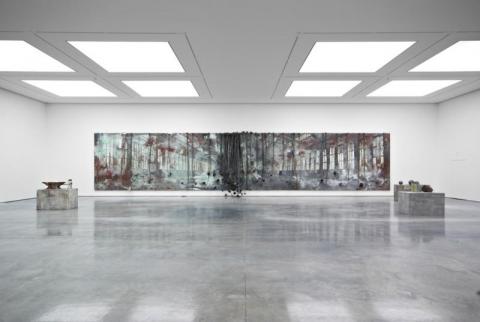
The next artwork is Alkahest, described as a stream of lead-fringed photographs of changing light on a beach spilling from a heavily oxidised lead bucket. One critic says it works as an embodiment of "the hastening of time." Does that clarify it for you?
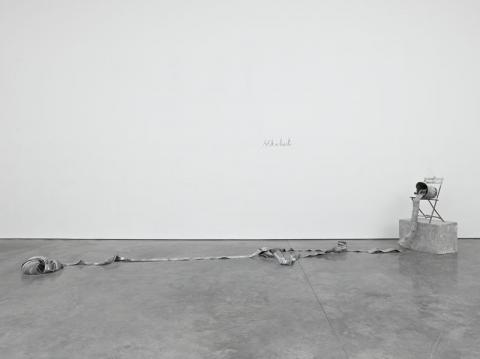
Next below is Dat rosa miel apibus, a great stack of lead books with small planes poking from between their rusting leaves. In this we are to appreciate the "exhilarating bravura and the feel for atrophic texture" ... probably easier to do when seen in real life?
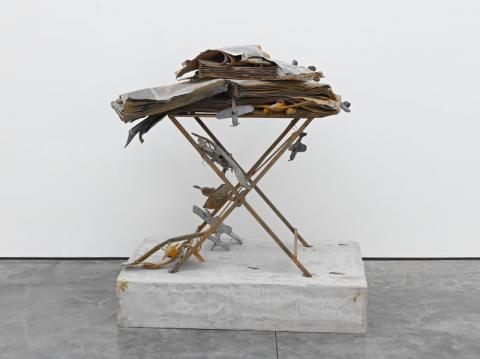
Finally, Sprache der vögel, from 1989, a stack of lead tomes and folding chairs sprouting lead eagle's wings set atop a massive block of ash-encrusted resin. The critic writes: "Teutonic mythology and cultural guilt elide in a megalomanic gesture" that now seems a bit too obvious.
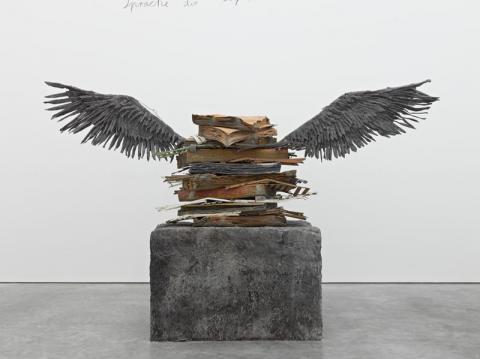
Kiefer said in a recent interview2 that Germans don't distinguish between Nazi architecture and Nazi art. "Nazi art is really horrible, it's boring, but the architecture of the 30s isn't specifically German, it was the architecture of its time. Speer was a bad politician, but he wasn't a bad architect." This makes me wonder whether Kiefer knows anything at all about art or is just a product of his time. He continued with something even more suprising:
After unification, says Kiefer, Berlin should have been rebuilt along the lines planned out by Speer for Hitler, in the way that Paris wouldn't exist in the way it does without Georges-Eugène Haussmann, commissioned by Napoleon III to modernise the city, "but in Germany it's difficult – they are afraid of taboos".
He is fervently pro-European, a theme which he says "pushes me". "On a cultural level, we need Europe," he says. "Germany alone is not good." He says that he'd like to see Europe like the USA – "I would go so far" – with regions like Île-de-France, Bordeux and north Germany the individual states within it. "It doesn't mean that you lose any [region's] specific individual charisma. Europe is a big political organisation and then you have all these countries – it's wonderful, no? We need Europe in an aesthetic way and a political way, and Merkel is now on the right way."
People who speak like this don't seem to know anything about the USA and it's "culture." Germans seem to have a real weakness for an idealized "America," including it's presidents. Kiefer says he approves of Angela Merkel. "I'm very happy that a woman is in power, I think they are better. We [men] are inferior." Merkel, he says, "doesn't want to be charismatic – she does her job in an old, Prussian way, and that impresses me. She decided to save Europe, and for that I must congratulate her."
Hmm, wasn't it that National Socialist fuehrer who first decided to save Europe? Now Merkel is going to save it for the bankers and their debt schemes. No wonder she got the Jewish medal too.
Endnote 1. A commenter to this article wrote: Contemporary modernism is NOT difficult - visually at least, studies have shown that people are able to absorb the visual information from contemporary modern pieces in a matter of seconds - and then move on. By contrast, people linger far, far longer on older art forms, bedazzled by the complexity and intricacy of the art on view. Contemporary modernism of Anselm Kiefer's ilk is scarily simplistic and massively over hyped; it's the "junk bond" of the cultural world, depending entirely upon the confidence of the few for its continued success and even its existence.
Viewers want art to be difficult, but they don't want to have to do all of the work. They're not happy with workshy charlatans who throw seemingly random junk together and expect them to find meaning and value. What they want is some evidence that the artist has actually made an effort to create something for them; a universe which they can enter; a reflection of the imagination of the artist.
Would a writer get away with publishing 300 pages of random words, letters and sentences, handing it to potential readers and saying "here you go, read this and try to imagine that it's a brilliant novel; the best you ever read"? No, of course not. But that, unfortunately, is what visual art has been reduced to.
2. http://www.guardian.co.uk/artanddesign/2011/dec/08/anselm-kiefer-art-white-cube?newsfeed=true
Category
Art & Culture, Art News, Germany, Jews- 6096 reads






